Understanding Marathon Digital Holdings (MARA) in the Evolving World of Bitcoin Mining
Welcome! As we navigate the fascinating and often complex landscape of digital assets, it’s crucial to understand the key players driving innovation and growth. Today, we’re turning our attention to Marathon Digital Holdings, commonly known by its NASDAQ ticker, MARA. If you’re new to the world of Bitcoin mining or looking to deepen your technical analysis understanding, exploring companies like MARA offers invaluable insight. They operate at the forefront of converting energy into digital value, a process fundamental to the functioning of the Bitcoin network. But what exactly makes MARA stand out, and how are they positioning themselves in the wake of significant market events like the Bitcoin halving? Let’s embark on this journey together, dissecting their recent performance, strategic shifts, and their unique approach to energy utilization.
Here are some key topics to understand about Marathon Digital Holdings:
- MARA is a publicly-traded company focused on Bitcoin mining.
- The company utilizes strategies to secure low-cost energy for operations.
- They are transitioning towards becoming a vertically integrated digital energy company.
Unpacking the Record-Breaking May 2025 Operational Results
Let’s start by looking at what Marathon Digital Holdings has been achieving operationally. Think of a mining company – their success is measured by how much they can extract. For a Bitcoin miner like MARA, that ‘extraction’ is measured in the amount of Bitcoin they successfully mine. May 2025 proved to be a landmark month for MARA, demonstrating significant operational momentum. We saw some truly impressive numbers that highlight their capacity and efficiency, especially considering the challenging post-halving environment where mining rewards per block are reduced. Understanding these operational highlights gives us a tangible measure of their execution capability.
Specifically, May 2025 marked a period of record-breaking activity for MARA. They reported their highest-ever number of Bitcoin blocks won in a single month, totaling a remarkable 282 blocks. This figure represents a substantial month-over-month increase of 38%. Winning blocks on the Bitcoin network is akin to finding a valuable ore deposit; it’s the direct result of contributing hashing power to solve the complex computational problems that validate transactions and secure the network. More blocks won means a larger share of the network’s mining rewards. This record indicates that MARA’s infrastructure was not only active but highly effective in competing for and securing these rewards during this period.
Furthermore, this operational efficiency translated directly into a significant increase in Bitcoin production. MARA produced 950 BTC in May 2025. This figure is noteworthy for a couple of reasons. Firstly, it’s a 35% increase compared to their April 2025 production. This jump is particularly impressive given that April was the month of the latest Bitcoin halving, which drastically cut the standard block reward in half. Achieving a post-halving high in production so quickly underscores their ability to optimize their operations and increase their share of the reduced rewards. This tells us that their operational strategies and infrastructure deployment are yielding positive results, allowing them to grow production even as the landscape becomes more competitive due to lower inherent profitability per unit of hashrate.
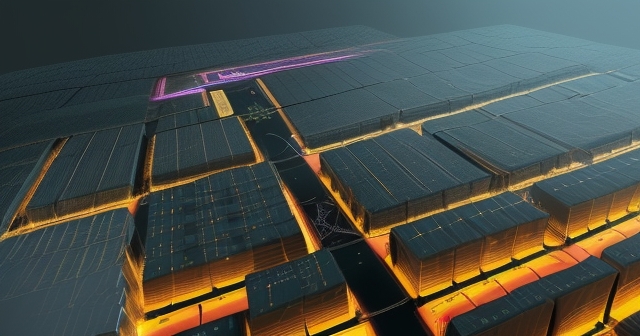
Deep Dive into Bitcoin Production and Block Wins
Let’s spend a moment digging deeper into the mechanics behind these reported figures. In Bitcoin mining, your potential to win a block and earn the associated reward (both newly minted BTC and transaction fees) is directly proportional to your share of the total network hashrate. Hashrate is the measure of the computational power being used to mine. MARA’s operational updates always include their ‘energized hashrate’, which represents the total computing power they have online and actively mining. As of May 31, 2025, MARA’s energized hashrate reached 58.3 EH/s (Exahashes per second), showing a modest 2.0% increase month-over-month. While the hashrate saw a slight increase, the significant jump in blocks won (38%) and BTC produced (35%) suggests factors beyond just raw hashrate growth were at play.
Winning more blocks than your proportional share of the network hashrate would statistically predict is often referred to as having “luck” or outperforming the network average block reward probability. While mining is fundamentally a probabilistic process, consistent outperformance, especially over a period like a month, can also point to operational efficiencies, better site management, or advantages within the specific mining pool. MARA’s achievement of 282 blocks from an average energized hashrate in May strongly suggests they experienced favorable variance, but also that their underlying operational setup was robust enough to capitalize on these opportunities when they arose. This isn’t just finding a needle in a haystack; it’s having a more efficient magnet and a larger haystack to search within.
The Bitcoin produced figure (950 BTC) is the direct result of winning those 282 blocks plus any associated transaction fees within those blocks. Post-halving, transaction fees play a much larger role in the total block reward compared to before. While the base block reward is now 3.125 BTC (down from 6.25 BTC), high network activity can lead to periods where transaction fees significantly supplement this. MARA’s production number includes both components. The fact that this is their highest production figure since the April 2024 halving emphasizes their successful adaptation and scaling in the new economic reality of Bitcoin mining, where efficiency and cost control are paramount.
| Metric | May 2025 | April 2025 | Change |
|---|---|---|---|
| Bitcoin Blocks Won | 282 | 204 | +38% |
| Bitcoin Production (BTC) | 950 | 700 | +35% |
| Energized Hashrate (EH/s) | 58.3 | 57.2 | +2.0% |
The Power of the MARA Pool: Efficiency and Luck
One critical factor that likely contributed to MARA’s strong May performance, particularly in block wins, is their self-owned and self-operated mining pool, known as the MARA Pool. Many large-scale miners join third-party mining pools, aggregating their hashrate with others to smooth out the variance of block discovery and receive more consistent, albeit shared, payouts. However, MARA has taken a different approach by creating its own pool. Why would a company do this?
Operating your own mining pool offers several potential advantages that align with MARA’s broader strategic goals. Firstly, it provides tighter operational control. They manage the pool software, the distribution of work to their miners, and the processing of discovered blocks. This level of control can potentially optimize the efficiency with which their machines contribute to the network and increase the probability of finding blocks when their hashrate is online and active. Secondly, it eliminates external pool fees. Third-party pools charge a percentage of the mining rewards for their services. By running their own pool, MARA retains 100% of the block reward value associated with the blocks they find. While there are costs associated with running the pool infrastructure, eliminating external fees can contribute significantly to overall profitability, especially at their scale.
Thirdly, and perhaps most relevant to the May results, operating their own pool means that any favorable variance or “luck” experienced in block discovery directly benefits MARA entirely. The provided data explicitly mentions that the MARA Pool “outperformed network average block reward luck (>10%)” in May. This means that for their level of hashrate online, they found more blocks than statistically probable. While luck can fluctuate month-to-month, a pool structure that potentially optimizes network communication or work distribution could theoretically contribute to slightly better performance over time compared to a standard pool setup, although the primary driver of outperformance over longer periods is typically the amount of hashrate deployed and its efficiency (cost per hash). The MARA Pool is highlighted by the company as a key differentiator, and the May results certainly seem to support its potential impact on their operational metrics.
Building Strength: MARA’s Growing Bitcoin Treasury
Beyond just mining Bitcoin, a core part of Marathon Digital’s strategy involves accumulating and holding the digital asset they produce. This is a common strategy among many public Bitcoin mining companies, viewing their mined BTC not just as immediate revenue to be sold, but as a strategic asset to be held on their balance sheet. MARA has been particularly aggressive in this regard, and their Bitcoin treasury reached a significant milestone in May 2025.
As of May 31, 2025, MARA’s total Bitcoin holdings increased to an impressive 49,179 BTC. This growth wasn’t due to market purchases in May; the data states they “did not sell any BTC in May 2025.” This means the entire increase in their treasury came directly from the 950 BTC they mined during the month. The decision not to sell highlights a bullish stance on the future price of Bitcoin and reflects a strategy focused on long-term asset accumulation. By holding mined coins rather than selling them to cover operational costs, they are leveraging their mining operations as a mechanism for compounding their exposure to Bitcoin’s price appreciation.
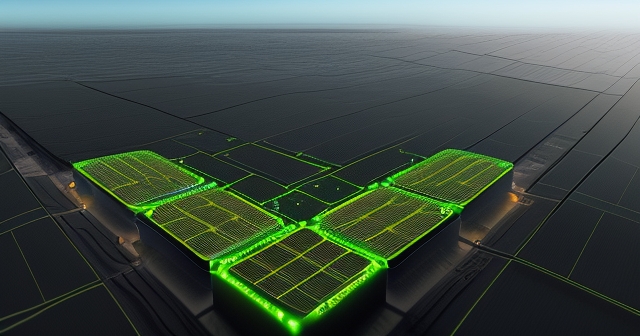
This strategy has propelled MARA to become one of the largest corporate holders of Bitcoin globally. With 49,179 BTC, they are positioned as the second-largest corporate Bitcoin holder, trailing only MicroStrategy, which has made large-scale purchases of BTC its primary corporate strategy. Holding nearly 50,000 BTC represents a substantial asset base, valued at approximately $5.28 billion based on late May prices. This treasury provides MARA with significant financial flexibility and serves as a powerful endorsement of Bitcoin as a store of value. It also positions them to potentially use this asset base for future strategic initiatives, though their primary focus remains on growth through mining and energy partnerships.
Financial Milestones: Revenue Records and Market Position
Operational success and treasury growth naturally lead to strong financial performance. While the May report primarily focused on production numbers, the underlying value generated by these operations can be significant, especially during periods of favorable Bitcoin price action. The data points to a key financial milestone achieved by MARA in late May 2025.
Fueled by a surge in the price of Bitcoin, MARA achieved a record annualized mining revenue exceeding $752 million on May 27. This figure is a snapshot, representing what their revenue would be over a full year based on the mining rates and Bitcoin price at that specific point in time. Nevertheless, it vividly illustrates the immense revenue-generating potential of their current mining infrastructure when combined with a strong market price for Bitcoin. This figure is not GAAP revenue, but rather a metric that demonstrates the capacity of their operations to generate value under prevailing market conditions. It serves as a powerful indicator for investors and analysts assessing the company’s financial leverage to the price of Bitcoin.
Beyond revenue potential, MARA holds a prominent position within the digital asset mining industry based on its market capitalization. As of early July 2024 (note: data was sourced showing ~ $5.7B as of 7/5/2024, contrasting with later May 2025 operational data, reflecting the dynamic market), MARA was the world’s largest publicly traded Bitcoin mining firm by market capitalization. Market cap is calculated by multiplying the company’s share price by the number of outstanding shares. This valuation reflects investor perception of the company’s current value and future potential, influenced by factors like operational scale, profitability, strategic direction, Bitcoin holdings, and the overall market sentiment towards Bitcoin and mining stocks. Being the largest in this category highlights MARA’s scale, investor recognition, and its leadership position among its publicly listed peers like Riot Platforms (RIOT), CleanSpark (CLSK), Hut 8 (HUT), and others.
| Financial Metric | May 2025 | Notes |
|---|---|---|
| Annualized Mining Revenue | $752 million | Based on rates as of May 27, 2025 |
| Total Bitcoin Holdings | 49,179 BTC | Significant corporate asset |
| Market Capitalization | $5.7 billion | As of July 2024 |
The Strategic Pivot: Becoming a Vertically Integrated Digital Energy Company
Perhaps the most significant element of MARA’s current trajectory is its strategic transformation. The company is actively shifting its identity from simply being a Bitcoin miner to becoming a vertically integrated digital energy and infrastructure company. What does this strategic shift entail, and why is it important?
Traditionally, many Bitcoin miners act primarily as tenants, leasing space in data centers and purchasing electricity from existing grid infrastructure or energy providers. This model relies heavily on third-party agreements for crucial operational inputs like power and physical space. Vertical integration, in contrast, means taking greater control over these critical components. For MARA, this involves acquiring and managing its own energy assets (like the wind farm discussed later) and developing its own mining site infrastructure and data centers. The goal is to reduce reliance on external parties and achieve greater control, cost-efficiency, and resilience.
Think of it like a bakery. Instead of just buying flour, sugar, and eggs from different suppliers, a vertically integrated bakery might own its own wheat farm, sugar mill, and egg farm. This gives them more control over input quality, potentially lowers costs by cutting out intermediaries, and ensures a more stable supply chain. For MARA, owning energy sources and infrastructure means potentially securing power at lower, more stable costs (<$0.03/kWh is a target mentioned as essential post-halving), optimizing site design for maximum operational efficiency, and enhancing operational resilience against potential disruptions from third-party providers. This transformation positions them not just as users of energy, but as active participants in the energy landscape, converting underutilized or stranded energy into valuable digital assets.
This strategic pivot isn’t just about mining more Bitcoin; it’s about doing so in a more controlled, efficient, and sustainable manner. It’s about building infrastructure that can monetize energy in novel ways, aligning with the evolving demands of both the energy sector and the digital asset ecosystem. This move towards becoming a “digital energy” company is a key differentiator and speaks to a long-term vision that extends beyond the immediate act of mining.
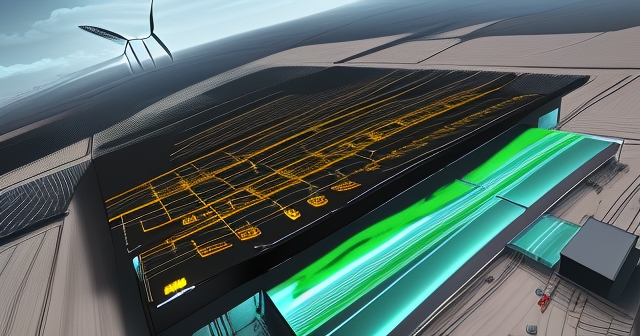
Innovating Energy Sourcing: Harnessing Flare Gas for Bitcoin Mining
A critical component of MARA’s digital energy strategy is their innovative approach to sourcing power, particularly their focus on monetizing otherwise wasted or underutilized energy sources. One of the most prominent examples is their initiative to utilize **flare gas** for Bitcoin mining. Flare gas is associated natural gas produced alongside oil extraction that is often burned off (flared) because transporting it to market is economically unfeasible. This flaring releases methane, a potent greenhouse gas, into the atmosphere.
MARA sees flared gas not as waste, but as a low-cost, abundant energy source that can be converted into economic value. By deploying mobile, plug-and-play Bitcoin mining units directly at oil and gas well sites, they can use the formerly flared gas to power generators that supply electricity to their mining equipment. This achieves several objectives simultaneously. Economically, it provides access to some of the cheapest energy available, a crucial advantage in the highly competitive post-halving mining environment where electricity costs are a primary determinant of profitability. Environmentally, it addresses a significant concern by converting waste methane, a potent greenhouse gas, into CO2 (through combustion in generators), which is a less potent warming agent. This process also aligns with growing regulatory pressure, such as the methane emissions fee included in the U.S. Inflation Reduction Act, which incentivizes oil and gas producers to capture or utilize associated gas rather than flaring it.
MARA has successfully piloted these flare gas initiatives, for example, deploying a 25 MW project in Texas utilizing stranded shale gas in partnership with companies like NGON. They are also in exploratory discussions with major energy companies, including potential partnerships with giants like Exxon Mobil and Saudi Aramco, to scale these operations globally. Imagine the potential impact of converting vast amounts of otherwise wasted energy into computational power that secures a global financial network! This isn’t just smart business; it’s an innovative solution addressing energy waste and environmental concerns through the lens of digital asset computation. Their mobile data center design is specifically suited for rapid deployment to remote energy sources like oil fields.
Diversifying Energy: Renewables and the Sustainable Approach
While flare gas presents a significant opportunity, MARA’s energy strategy is also about diversification and sustainability. Their acquisition of a wind farm in Hansford County, Texas, is a clear example of this broader approach. Investing in renewable energy sources like wind power further integrates them into the energy supply chain and aligns with their vision of utilizing “clean, stranded, or underutilized energy.”
Acquiring a wind farm allows MARA to generate its own electricity from a renewable source. This provides a degree of price certainty for a portion of their energy needs, insulating them somewhat from volatility in fossil fuel markets. Furthermore, operating a Bitcoin mining facility in conjunction with a renewable energy source like wind or solar offers potential grid balancing services. Renewable energy generation can be intermittent (wind doesn’t always blow, sun doesn’t always shine). Bitcoin mining, with its flexible load, can act as a “dispatchable load,” meaning mining operations can be ramped up when renewable energy is abundant and cheap (or even when the grid has excess supply causing negative prices) and curtailed when renewable output is low and grid demand is high. This symbiotic relationship can improve the economics of renewable projects and enhance grid stability.
By combining initiatives like flare gas monetization with investments in renewables, MARA is building a diversified energy portfolio designed to secure low-cost power while also addressing environmental considerations. Their strategy is to convert various forms of underutilized or potentially curtailed energy – whether it’s waste gas at an oil field or excess power from a wind farm during off-peak hours – into economic value through the process of digital asset compute. This positions them favorably in a world increasingly focused on sustainable energy practices and efficient resource utilization. It’s a tangible demonstration of their commitment to becoming a leader in the “digital energy” space.
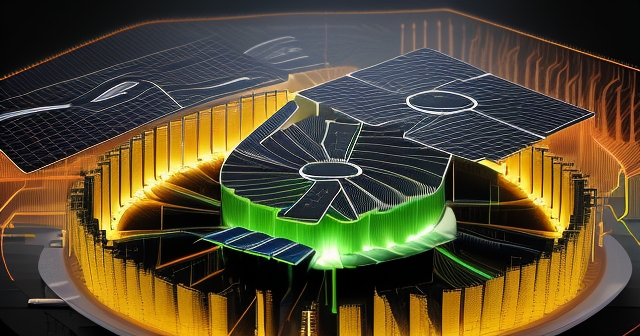
Navigating the Post-Halving Landscape with a Low-Cost Energy Edge
The Bitcoin halving, which occurred in April 2024, is a seismic event for the mining industry. It slashes the number of new Bitcoin rewarded to miners per block by half, immediately reducing the revenue generated by a given amount of hashrate. This event fundamentally changes the economics of mining, making operational efficiency and, critically, the cost of energy more important than ever before.
In the post-halving environment, miners with high energy costs will find it increasingly difficult to remain profitable. The reduced block reward means that a larger percentage of the revenue is needed just to cover electricity expenses. This creates significant pressure to find and secure energy sources below a certain threshold cost per kilowatt-hour. As the data suggests, securing low-cost energy sources, potentially below $0.03/kWh, becomes essential for aggressive pursuit of profitable mining scale. This is precisely why MARA’s focus on flare gas and other forms of underutilized energy is so strategically important post-halving. These sources often provide power significantly below grid prices, offering a crucial competitive advantage when the base reward is halved.
Companies that can access and utilize these low-cost or even negatively priced energy sources are best positioned to not only survive but thrive in the post-halving world. They can maintain profitability even when Bitcoin prices fluctuate or network difficulty increases. MARA’s strategic shift towards vertical integration and its emphasis on innovative energy solutions like flare gas and renewables are direct responses to this post-halving reality. They are building an operational model designed to maintain profitability and continue scaling production in a landscape where energy cost arbitrage is a primary driver of success. This proactive approach to securing a low-cost energy edge is arguably their most critical strategic response to the halving event.
What’s Next? Outlook and Potential Partnerships
Looking ahead, what should we be watching for from Marathon Digital Holdings? The May 2025 results provide a strong foundation and demonstrate the early successes of their strategic initiatives. However, the real test will be their ability to consistently replicate and scale these results over time, particularly in the dynamic and competitive Bitcoin mining environment.
Key areas to monitor include the execution of their vertical integration strategy. How quickly and effectively can they bring new self-controlled sites online? Will their investments in energy infrastructure yield the projected cost savings and operational efficiencies? Another critical area is the progress of their discussions and potential partnerships with major energy companies regarding flare gas monetization. Securing large-scale agreements with players like Exxon Mobil or Saudi Aramco would represent a significant validation of their model and open up vast new opportunities for low-cost energy sourcing on a global scale. Watch for announcements regarding Memoranda of Understanding (MoUs) or definitive agreements in this space.
Furthermore, we should observe how their energized hashrate continues to grow and, importantly, how efficiently that hashrate translates into Bitcoin production via the MARA Pool. While May saw favorable luck, sustained strong performance will require continued operational excellence and perhaps further optimization of their pool technology. Finally, keep an eye on their Bitcoin treasury. Will they continue to accumulate mined BTC, or will they strategically sell a portion to fund further expansion? Their balance sheet management in a fluctuating market will be key.
Conclusion: MARA’s Position in the Evolving Digital Asset Space
Marathon Digital Holdings’ performance in May 2025, highlighted by record block wins and post-halving high production, underscores the company’s operational strength and the promising early results of its strategic pivot. By proactively transforming into a vertically integrated digital energy and infrastructure company, MARA is moving beyond the traditional mining model to address the critical challenges and opportunities in the post-halving era.
Their focus on securing low-cost energy through innovative solutions like flare gas monetization and strategic investments in renewables positions them uniquely in the industry. This isn’t just about reducing costs; it’s about converting otherwise wasted or underutilized energy into valuable digital assets, aligning economic goals with environmental considerations. Their growing Bitcoin treasury further solidifies their position as a significant player, demonstrating conviction in the long-term value of the asset they mine.
As you continue to explore the technical analysis of companies in the digital asset space, understanding the fundamental operational drivers and strategic direction, like those demonstrated by MARA, is essential. They represent a compelling case study in how companies are adapting to the evolving economics of Bitcoin mining and attempting to carve out a durable competitive advantage in a rapidly changing landscape. By focusing on innovation, efficiency, and strategic energy partnerships, Marathon Digital Holdings is positioning itself not only as a leading Bitcoin producer but also as a key innovator in the intersection of energy and digital asset computation. Keep learning, keep exploring, and remember that understanding the underlying mechanics is key to navigating this exciting frontier.
marathon bitcoin miningFAQ
Q:What is the primary business of Marathon Digital Holdings (MARA)?
A:MARA is focused on Bitcoin mining and converting energy into digital assets.
Q:How has MARA’s Bitcoin production changed post-halving?
A:MARA reported a significant increase in Bitcoin production following the April 2024 halving, reaching 950 BTC in May 2025.
Q:What strategies does MARA employ to secure low-cost energy?
A:MARA utilizes innovative solutions like flare gas and invests in renewable energy sources such as wind farms.
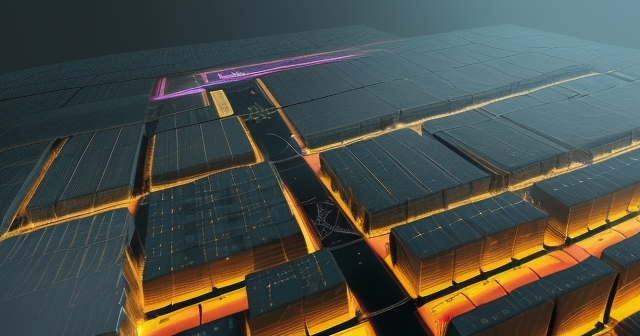
留言